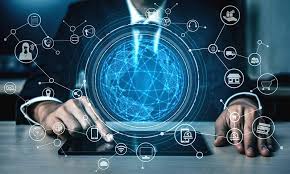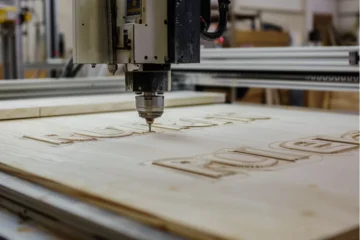The retail industry has always been at the forefront of adopting new technologies to enhance customer experience, optimize operations, and improve profitability. One of the most transformative technologies to emerge in recent years is the Internet of Things (IoT). IoT connects physical devices to the internet, allowing them to collect and share data in real time. This technology has far-reaching implications for the retail sector, enabling businesses to operate more efficiently, understand their customers better, and create seamless shopping experiences. In this article, we will explore what IoT is, how it is being integrated into the retail industry, and the benefits it brings to both retailers and consumers.
Understanding IoT: The Basics
The Internet of Things (IoT) refers to the network of physical objects—ranging from everyday household items to industrial machines—that are embedded with sensors, software, and other technologies to connect and exchange data with other devices and systems over the internet. The concept of IoT extends beyond simple connectivity; it involves creating smart environments where devices communicate, collaborate, and make decisions autonomously based on real-time data.
In the retail context, IoT encompasses a wide array of applications, including smart shelves that monitor inventory levels, connected point-of-sale (POS) systems that streamline transactions, and personalized digital signage that adapts to customer preferences. These applications leverage IoT to gather data, automate processes, and provide actionable insights, ultimately enhancing the efficiency and effectiveness of retail operations.
How IoT Is Transforming Retail
The integration of IoT technology into the retail industry is driving significant changes in the way retailers operate and interact with customers. By connecting various elements of the retail ecosystem, IoT enables more precise control over inventory, better customer insights, and enhanced in-store experiences.
Smart Inventory Management: One of the most significant applications of IoT in retail is in inventory management. Traditional inventory systems often rely on manual processes, which can be time-consuming and prone to errors. IoT-enabled smart shelves and inventory sensors provide real-time visibility into stock levels, automatically alerting store managers when items are running low or when there are discrepancies. This real-time data helps retailers optimize their inventory, reducing the risk of stockouts and overstock situations. For example, RFID (Radio Frequency Identification) tags, combined with IoT, can track the movement of products from the warehouse to the store, ensuring that shelves are always stocked with the right products at the right time.
Enhancing Customer Experience: IoT technology is also revolutionizing the customer experience by creating more personalized and interactive shopping environments. IoT devices, such as beacons and smart mirrors, can communicate with customers’ smartphones, providing them with tailored promotions, product recommendations, and even virtual try-ons. For instance, when a customer walks into a store, IoT-enabled beacons can detect their presence and send personalized offers directly to their mobile device based on their shopping history and preferences. This level of personalization enhances customer engagement and loyalty, making the shopping experience more enjoyable and relevant.
Streamlining Checkout Processes: The checkout process is often a pain point for customers, with long lines and slow transactions leading to frustration. IoT technology can help streamline this process by enabling faster, more efficient transactions. For example, IoT-enabled POS systems can process payments more quickly and accurately, reducing wait times at the checkout counter. Additionally, IoT can facilitate the development of cashier-less stores, where customers can simply walk out with their purchases, and the payment is automatically processed through sensors and connected payment systems. Amazon Go is a prime example of this technology in action, where customers can shop without the need to interact with a cashier.
The Benefits of IoT in Retail
The adoption of IoT technology in retail offers numerous benefits, ranging from improved operational efficiency to enhanced customer satisfaction. These benefits are driving widespread adoption of IoT across the retail sector, as businesses seek to stay competitive in an increasingly digital marketplace.
Operational Efficiency: IoT enables retailers to automate and optimize various aspects of their operations, leading to significant cost savings and efficiency gains. Smart inventory management systems reduce the need for manual stock checks, while automated supply chain management systems ensure that products are replenished on time. IoT can also monitor and manage energy usage in stores, optimizing heating, lighting, and cooling systems based on real-time data, thereby reducing energy costs.
Data-Driven Decision-Making: One of the most valuable aspects of IoT in retail is its ability to generate vast amounts of data. This data provides retailers with deep insights into customer behavior, product performance, and operational efficiency. By analyzing this data, retailers can make more informed decisions, from pricing strategies to product placement. For example, data from IoT sensors can reveal which areas of a store receive the most foot traffic, allowing retailers to strategically place high-margin products in those areas to maximize sales.
Improved Customer Satisfaction: IoT enhances the customer experience by providing more personalized, convenient, and engaging shopping experiences. Whether it’s through personalized promotions, faster checkout processes, or enhanced in-store navigation, IoT helps retailers meet and exceed customer expectations. Satisfied customers are more likely to return and recommend the store to others, driving customer loyalty and long-term business success.
Competitive Advantage: In today’s competitive retail landscape, staying ahead of the curve is essential. IoT provides retailers with the tools they need to differentiate themselves from competitors. By adopting IoT technologies, retailers can offer unique shopping experiences, optimize their operations, and respond more quickly to market trends. This competitive advantage can help retailers attract new customers, retain existing ones, and ultimately grow their market share.
IoT and Retail: Challenges and Considerations
While IoT and retail together offer numerous benefits, this integration also presents certain challenges and considerations that businesses must address to fully realize its potential.
Data Security and Privacy: The vast amount of data generated by IoT devices can be a double-edged sword. While this data is invaluable for improving operations and customer experiences, it also raises concerns about data security and privacy. Retailers must ensure that they have robust cybersecurity measures in place to protect sensitive customer information and prevent data breaches. Additionally, businesses must navigate the complex landscape of data privacy regulations, ensuring that they are compliant with laws such as the General Data Protection Regulation (GDPR) and the California Consumer Privacy Act (CCPA).
Integration and Interoperability: Another challenge associated with IoT adoption in retail is the integration of new IoT devices with existing systems. Retailers often use a variety of legacy systems for inventory management, POS, and customer relationship management (CRM). Ensuring that these systems can seamlessly integrate with new IoT devices is crucial for realizing the full benefits of IoT. Retailers may need to invest in middleware or other integration solutions to ensure that data flows smoothly between different systems.
Cost and Scalability: Implementing IoT technology can require significant upfront investment in hardware, software, and infrastructure. Retailers must carefully consider the cost-benefit analysis of IoT adoption, particularly for small and medium-sized businesses with limited budgets. Additionally, as the business grows, the IoT infrastructure must be scalable to accommodate increased data volumes and more connected devices.
Employee Training and Change Management: The successful implementation of IoT in retail requires employees to adapt to new technologies and workflows. Retailers must invest in training programs to ensure that employees are comfortable using IoT devices and can effectively leverage the data they generate. Change management strategies are also essential to address any resistance to new technologies and to foster a culture of innovation within the organization.
Conclusion
The integration of IoT technology into the retail industry is revolutionizing the way businesses operate and interact with customers. From smart inventory management to personalized shopping experiences, IoT offers a wide range of applications that enhance operational efficiency, improve customer satisfaction, and provide a competitive advantage. However, retailers must also navigate challenges related to data security, system integration, cost, and employee training to fully realize the benefits of IoT. As the retail industry continues to evolve, the role of IoT will only become more critical, shaping the future of shopping and driving the next wave of innovation in the sector.




